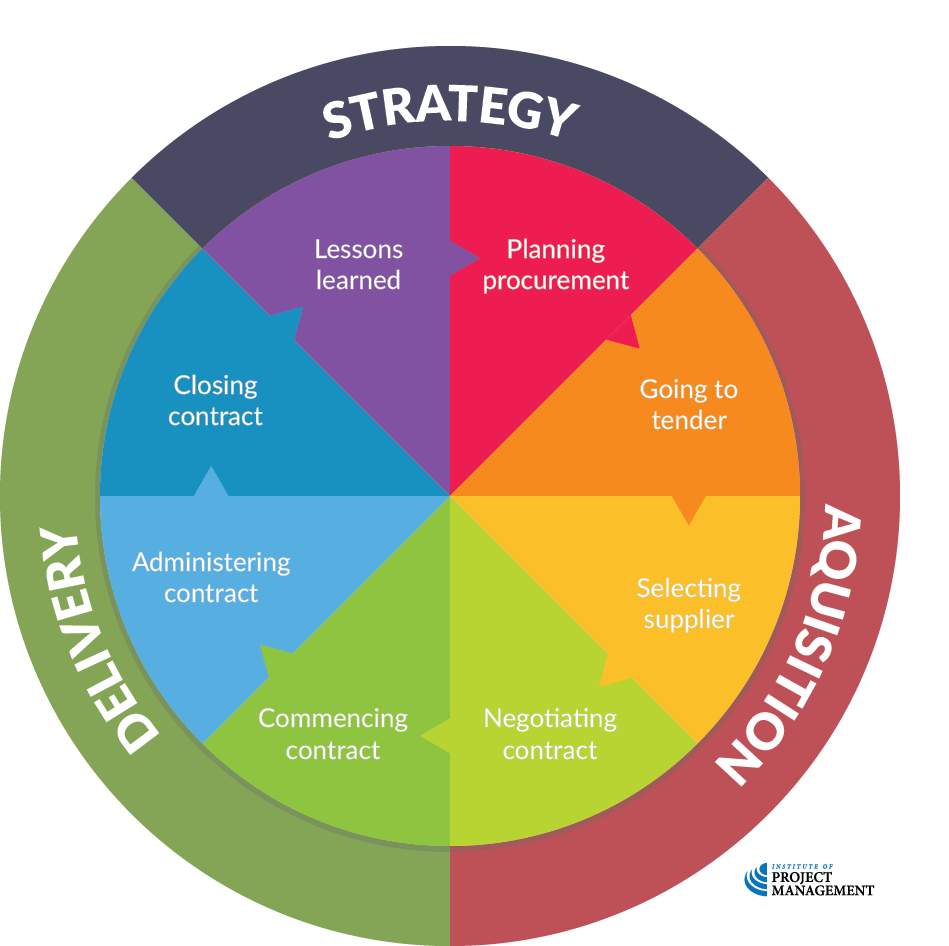The eight stages
The procurement process captures everything from planning the procurement, conducting a tender, negotiating and entering into a contract, administering that contract and successfully bringing it to a close.
As with projects, every procurement has a life with a clearly defined start and finish.

1. Plan the procurement
Planning for procurement is a strategic activity that references organizational policies and procedures, reviews the lessons from past procurements, and applies both to your current procurement need.
Ideally, you will have a body of best-practice knowledge and assets within your organization to draw on as you pull together a team charged with seeing the procurement through from start to finish.
2. Go to tender
Tendering is the process of expressing interest or making an offer, bid or proposal in response to a request for procurement.
In seeking other businesses to respond to a particular need, such as the supply of goods and services, organizations will select an offer or tender that delivers the outputs they require and provides the best value for money.
3. Select a supplier
Selecting a preferred supplier from the tender pool should follow a formal, structured process.
This ensures that the ‘best’ tenderer is chosen objectively, without real or perceived bias, and in the best interests of both the organization and its project.
4. Negotiate the contract
On larger procurements, it may be desirable to enter into negotiation with a preferred supplier before committing to a contract.
Doing so clarifies the outputs and processes to be followed, ensuring quality is assured and controlled.
5. Commence the contract
The kick-off meeting between the project team and its contractors may be the first contact between the parties, as negotiation may have taken place at another level in the organization.
Either way, this critical milestone sets the foundation for the relationship between parties and project success.
6. Administer the contract
Contract administration is more than just accepting updates and hoping for the best.
Managing conflict and change are crucially essential skills for every project manager, and doing so within the framework of a contract presents its own unique challenges.
7. Close the contract
Successful performance is the ideal outcome of every contract; however, there are several specific remedies available to parties when things don’t go right.
Each country has its own legal principles in this regard, and the project manager should be at least basically familiar with them.
8. Lessons learned
Organizations that fail to capture and embed the good and bad lessons they learn from the procurement process are doomed to stagnate or even fail.
It is important that every contract is reviewed upon close to guarantee success is leveraged and missteps are not repeated.
Procurements as projects
Every procurement is a project in its own right, in that it is a unique endeavor with a defined start and finish, bound by the triple constraints.
A business case may identify and justify the ideal level of procurement required for a project, something that may be further revealed in your analysis of project requirements.
The processes for managing project delivery and closing we introduce in this course are also equally applicable to the management of contracts.
That said, there are aspects of managing contractual relationships that are somewhat distinct from managing internal project teams – these are themes we will explicitly explore as we take you through the project’s life.
In the following few topics, we will introduce a number of best-practice processes to follow when acquiring the services of external consultants and contractors.
Although many of these steps may be fast-tracked or even skipped over on small or low-risk procurements, it is important to be mindful of them in all circumstances.




